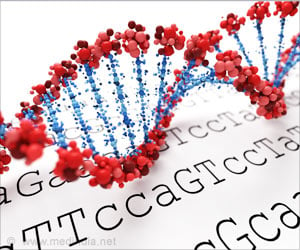Gene misbehavior is widespread even in healthy individuals. This discovery enhances our understanding of genetic complexities and aids in disease diagnosis.

Misexpression of inactive genes in whole blood is associated with nearby rare structural variants
Go to source). Researchers from the Wellcome Sanger Institute, the University of Cambridge and AstraZeneca studied the activity of inactive genes in a large, healthy population for the first time. While rare at the individual gene level, they revealed misexpression is widespread across samples and involved more than half of the genes that should be inactive.
‘#Gene misbehavior is common but doesn't always cause health issues. Understanding gene #misexpression helps diagnose and treat #diseases, aiding further genetic research.’





The findings, published in the American Journal of Human Genetics, shed new light on how our genetic code operates. The approach could be used in future research to investigate various complex diseases. The Role of the Human Genome in Cell Function
The human genome contains about 19,900 genes. These genes form part of the instruction manual for our bodies, encoding proteins needed to carry out cell functions. Proper gene regulation involves turning these gene instructions on and off as needed, depending on a cell’s specific role or environmental factors. When this regulation fails and a typically inactive gene is activated, or ‘expressed’, it can disrupt normal cell function1.While gene misexpression has previously been linked to several rare diseases, such as congenital limb syndromes2, it is not known how often or why this may happen in the general population.
In this new study, researchers analysed blood samples from 4,568 healthy individuals from the INTERVAL study3. They used advanced RNA sequencing techniques to measure gene activity and whole genome sequencing to identify genetic changes behind irregular gene activity.
The team found that while misexpression events were rare at the individual gene level –occurring in only 0.07 percent of genes – nearly all samples – 96 percent – had some misexpression, with over half of the normally inactive genes showing misexpression. They also found these events can be caused by rare structural changes in the DNA4.
Advertisement
Dr Katie Burnham, author of the study at the Wellcome Sanger Institute, said: “Interestingly, while over half of genes occasionally misexpress, we find certain critical genes, particularly those governing development, rarely make such mistakes. This suggests that when these essential genes do misexpress, the consequences for health and disease are likely to be more severe.”
Reference:
- Misexpression of inactive genes in whole blood is associated with nearby rare structural variants - (https://www.cell.com/ajhg/fulltext/S0002-9297(24)00223-4)
Source-Eurekalert












